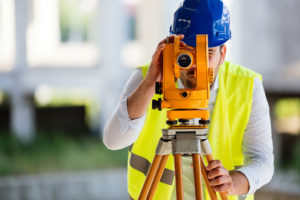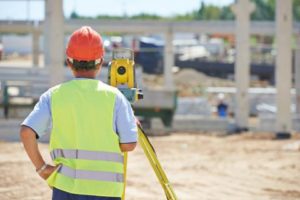Land surveying is an essential and important step for any civil engineering project, including freeways, bridges, damns, and similar constructions. It’s mainly necessary in order to establish property lines, note national and state boundaries, chart coastlines, prepare topographical maps, and many other factors that can directly impact a construction project of any size. Mapping the land helps planners and architects navigate the land they’ll be working with and figure out how to best utilize the area.
Through land surveys, professional surveyors are able to collect a host of information that lets civil engineers make educated decisions about their construction jobs, including decisions that affect safety and cost. They’re extremely helpful in selecting a site before construction even begins, as well as noting any potential hazards, flood zones, potentially expensive land grading necessities, and more. Accuracy is of the utmost importance when you’re planning a major project like a road or bridge, and a land surveyor uses a combination of mathematics and technology to ensure that the land is measured as exactly as possible.
Land surveying involves abstract thinking, as well. Outside factors may impact the survey, such as errors in past surveys, changes to the land or water features, or even wildlife crossings. Determining property lines and making sure an area is okay to build on without encroaching on another property or city line can make all the difference between moving ahead with a job or suffering a major (and expensive) setback.
The world around us is constantly shifting in more ways than one, and a survey from even a few years ago may no longer be relevant if an area’s being reconsidered for development. Whether you’re planning the city’s next civil project or you’re looking to construct on private property, land surveying is important for a cost-effective, safe, and accurate outcome. If you have any other questions about how land surveys can help you with your next project, reach out to Cinquini & Passarino anytime.



 Before you can understand why certain parcel map waivers exist for the city of Santa Rosa, you should understand what a parcel map is. Parcel maps are, in a nutshell, maps that are created by using information that’s been filed with the Town Clerk’s office. Usually surveys are part of this information and are often used to create these maps.
Before you can understand why certain parcel map waivers exist for the city of Santa Rosa, you should understand what a parcel map is. Parcel maps are, in a nutshell, maps that are created by using information that’s been filed with the Town Clerk’s office. Usually surveys are part of this information and are often used to create these maps. How do you find a land surveyor? More importantly, how do you find the RIGHT land surveyor for the job? There are a lot of factors to consider when you’re trying to choose the land surveying company to assess your property, or boundary lines, or potential construction sites, or anything else. Every job requires a unique set of skills, and you want to make sure you’re going with the right person.
How do you find a land surveyor? More importantly, how do you find the RIGHT land surveyor for the job? There are a lot of factors to consider when you’re trying to choose the land surveying company to assess your property, or boundary lines, or potential construction sites, or anything else. Every job requires a unique set of skills, and you want to make sure you’re going with the right person.